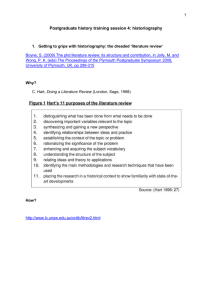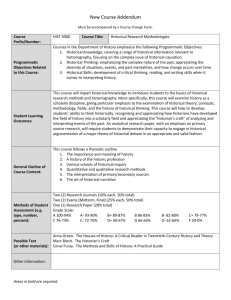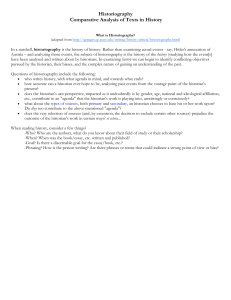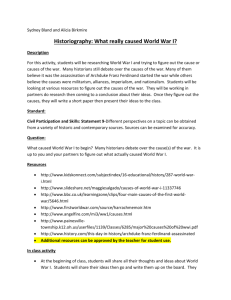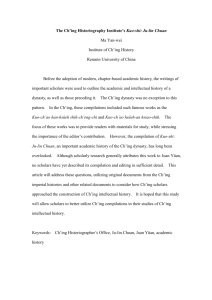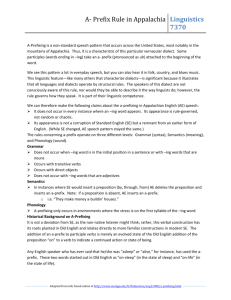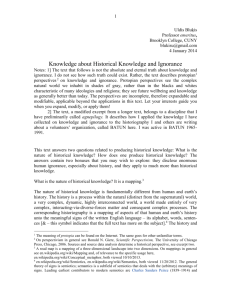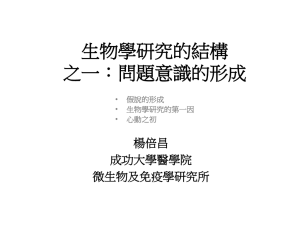Abstract
advertisement
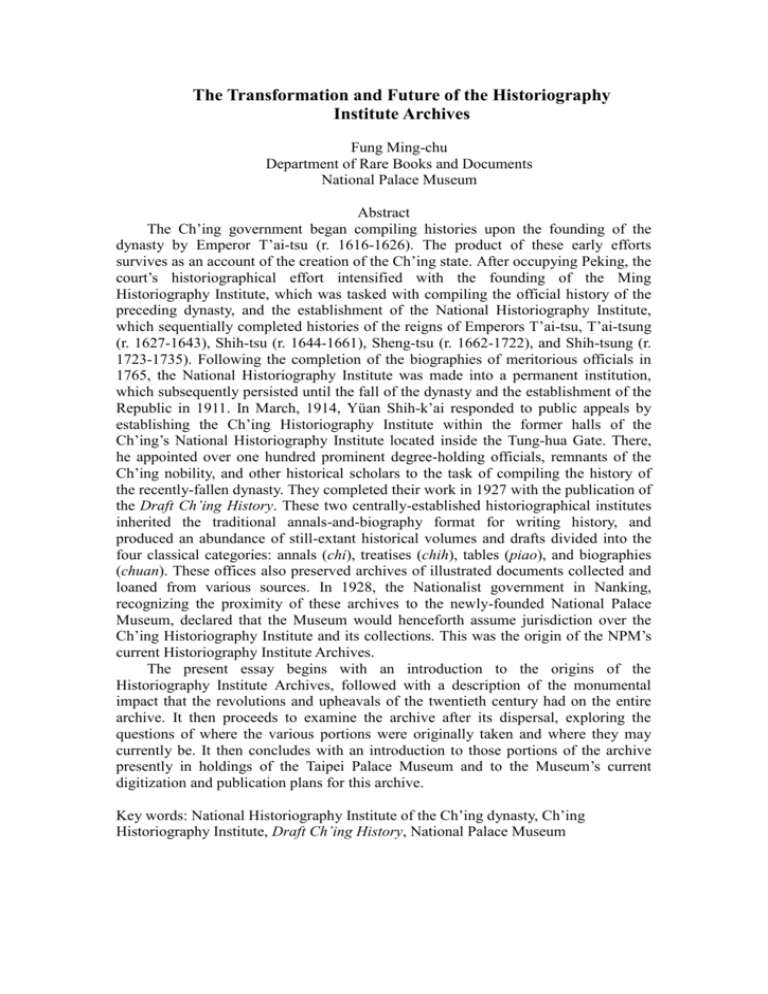
The Transformation and Future of the Historiography Institute Archives Fung Ming-chu Department of Rare Books and Documents National Palace Museum Abstract The Ch’ing government began compiling histories upon the founding of the dynasty by Emperor T’ai-tsu (r. 1616-1626). The product of these early efforts survives as an account of the creation of the Ch’ing state. After occupying Peking, the court’s historiographical effort intensified with the founding of the Ming Historiography Institute, which was tasked with compiling the official history of the preceding dynasty, and the establishment of the National Historiography Institute, which sequentially completed histories of the reigns of Emperors T’ai-tsu, T’ai-tsung (r. 1627-1643), Shih-tsu (r. 1644-1661), Sheng-tsu (r. 1662-1722), and Shih-tsung (r. 1723-1735). Following the completion of the biographies of meritorious officials in 1765, the National Historiography Institute was made into a permanent institution, which subsequently persisted until the fall of the dynasty and the establishment of the Republic in 1911. In March, 1914, Yüan Shih-k’ai responded to public appeals by establishing the Ch’ing Historiography Institute within the former halls of the Ch’ing’s National Historiography Institute located inside the Tung-hua Gate. There, he appointed over one hundred prominent degree-holding officials, remnants of the Ch’ing nobility, and other historical scholars to the task of compiling the history of the recently-fallen dynasty. They completed their work in 1927 with the publication of the Draft Ch’ing History. These two centrally-established historiographical institutes inherited the traditional annals-and-biography format for writing history, and produced an abundance of still-extant historical volumes and drafts divided into the four classical categories: annals (chi), treatises (chih), tables (piao), and biographies (chuan). These offices also preserved archives of illustrated documents collected and loaned from various sources. In 1928, the Nationalist government in Nanking, recognizing the proximity of these archives to the newly-founded National Palace Museum, declared that the Museum would henceforth assume jurisdiction over the Ch’ing Historiography Institute and its collections. This was the origin of the NPM’s current Historiography Institute Archives. The present essay begins with an introduction to the origins of the Historiography Institute Archives, followed with a description of the monumental impact that the revolutions and upheavals of the twentieth century had on the entire archive. It then proceeds to examine the archive after its dispersal, exploring the questions of where the various portions were originally taken and where they may currently be. It then concludes with an introduction to those portions of the archive presently in holdings of the Taipei Palace Museum and to the Museum’s current digitization and publication plans for this archive. Key words: National Historiography Institute of the Ch’ing dynasty, Ch’ing Historiography Institute, Draft Ch’ing History, National Palace Museum
